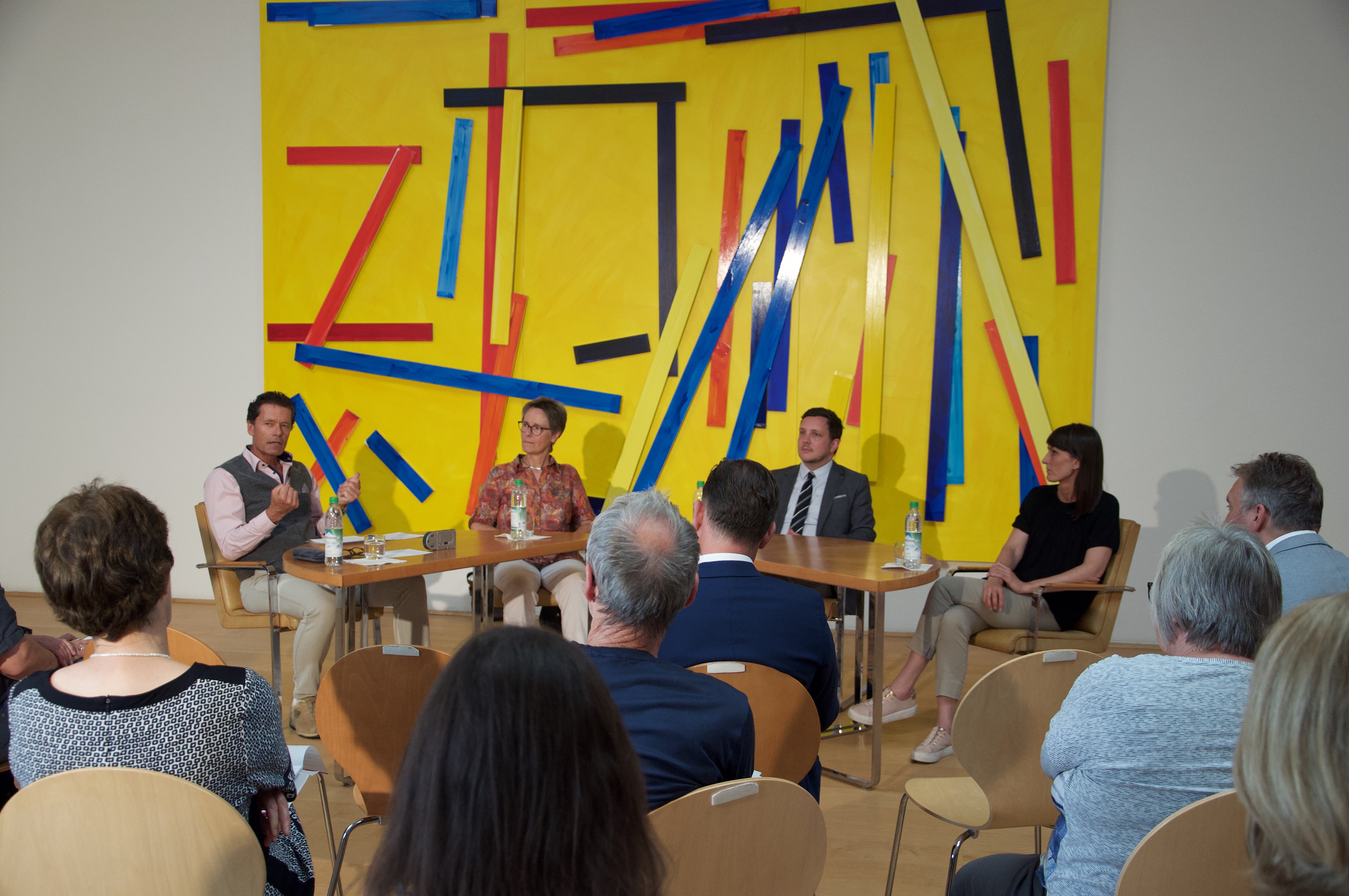
Panel discussion "Significance of the DASMAXIMUM Museum for the City of Traunreut and the County of Traunstein" with Axel Effner, Dr. Birgit Löffler, Hans-Peter Dangschat and Dr. Maria Schindelegger in front of Imi Knoebel, "Fishing Yellow", 2008, © VG Bild-Kunst, Bonn. Photo DASMAXIMUM
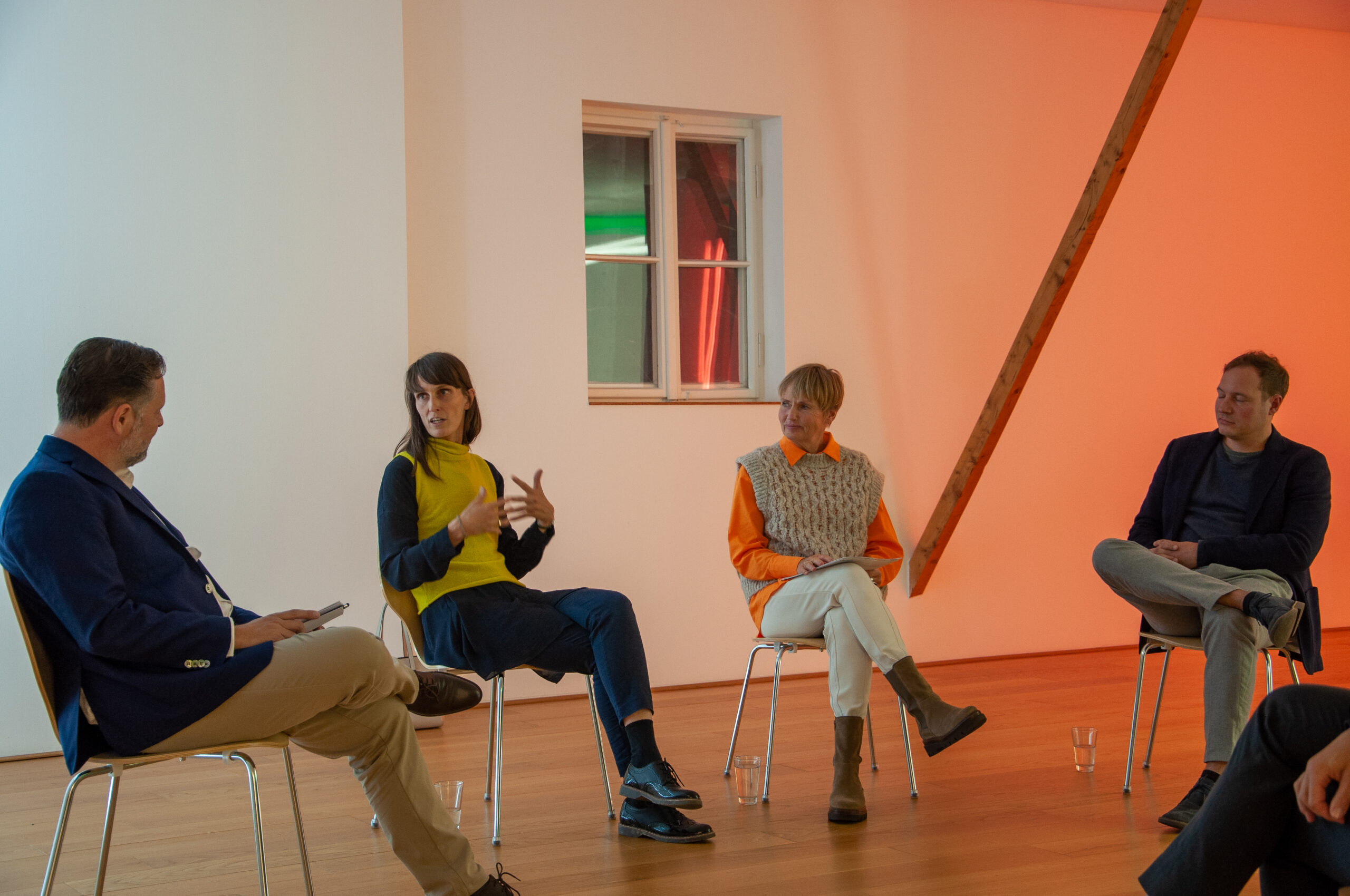
Roundtable discussion "DASMAXIMUM - Vision and Mediation" in the Dan Flavin Hall with José Hazanas, Dr. Maria Schindelegger, Susanne Frigge and Jeffrey Veit. Photo DASMAXIMUM
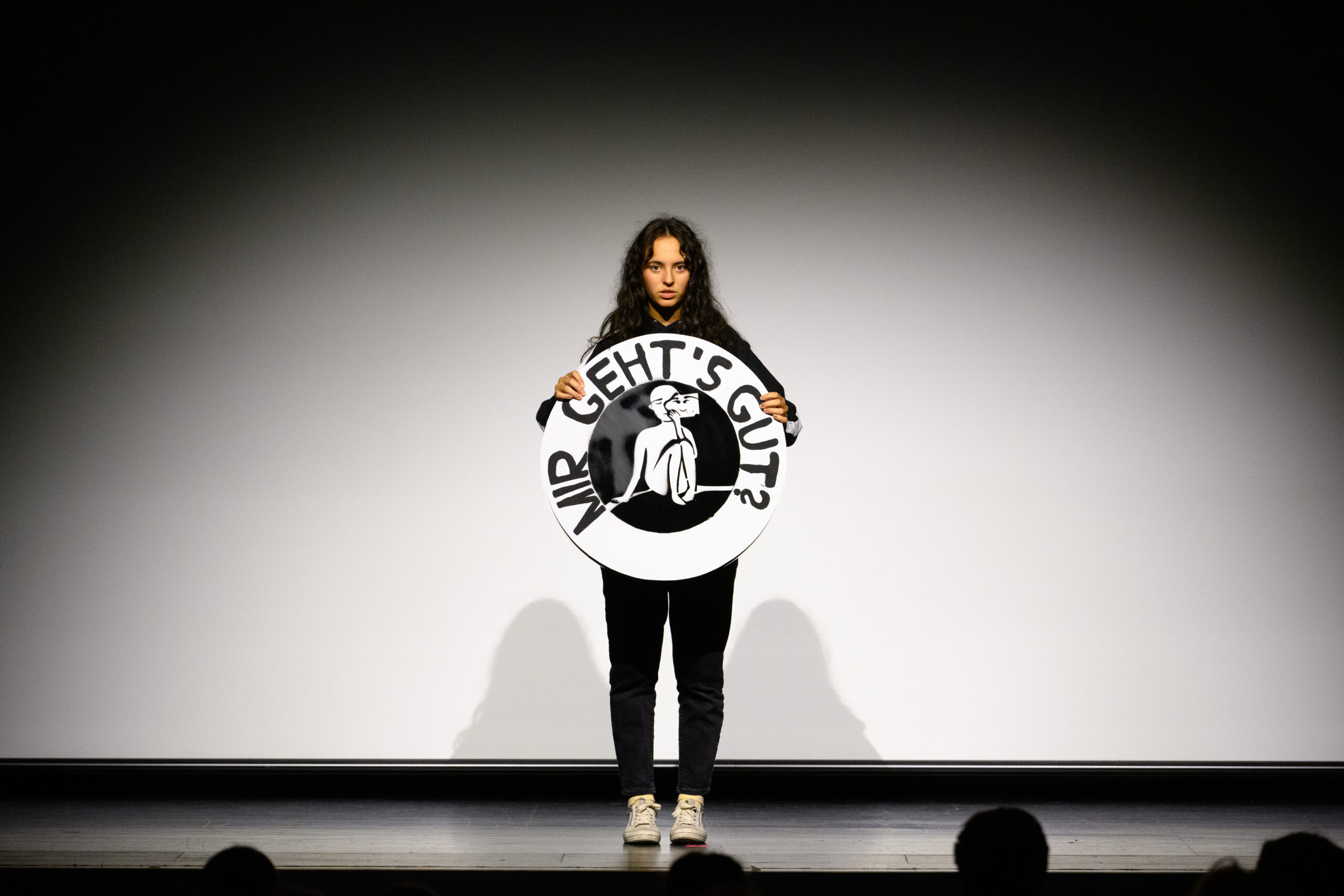
Project presentation of the ZukunftAtelier at k1, student of the JHG Traunreut with her poster "Mir geht's gut?". Photo Gastager
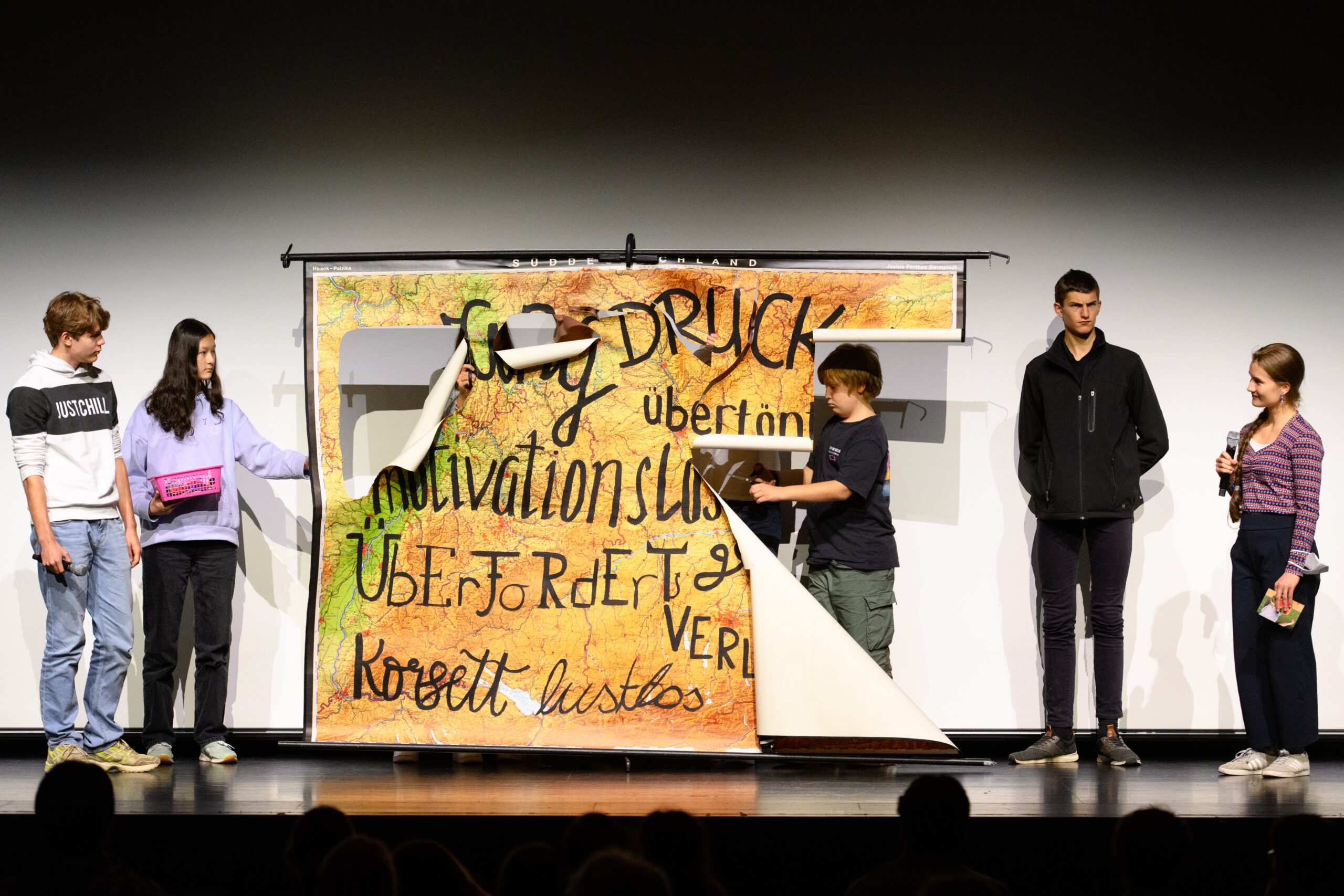
Students of CHG Traunstein during their scissors performance on stage. from left: Tim Klose, Yanna Gronau, Mikael Unterreiner, Sebastian Lahr and Johanna Kosak. Photo Gastager
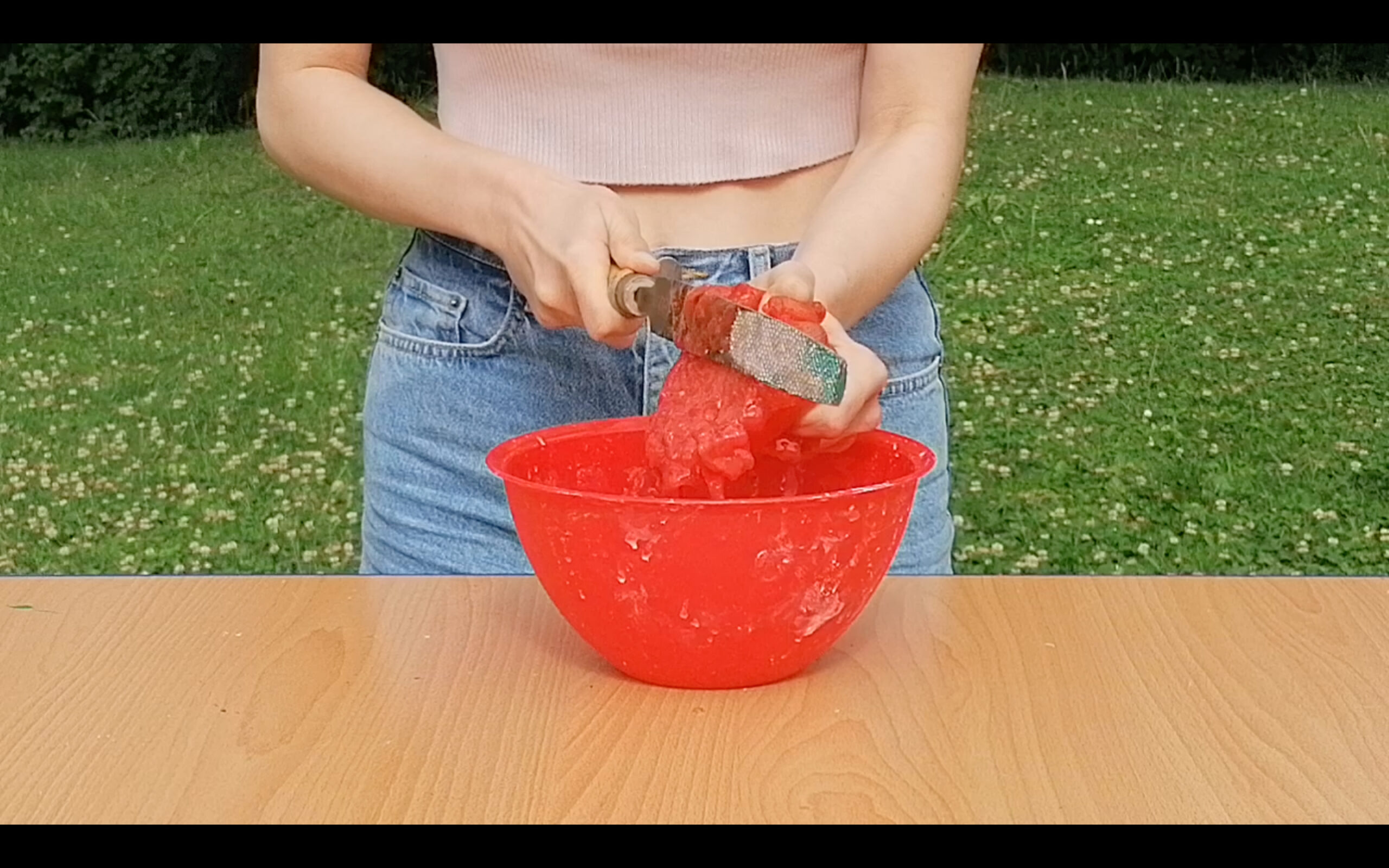
Video still from the project of the students of CHG Traunstein.
Engaging in exchange: With visitors, politicians and other actors in the field of culture and education. This is the goal of the series of talks at DASMAXIMUM KunstGegenwart, which was launched this year by the Friends and Sponsors Association. A total of three rounds of talks took place this year. The first, in June, asked the question of the "significance of the DASMAXIMUM museum for the city of Traunreut and the district of Traunstein".
A stroke of luck for Traunreut
In the Knoebel Hall of the museum, moderator Axel Effner discussed the role and significance of the museum for the region with Hans-Peter Dangschat (First Mayor of Traunreut), Dr. Birgit Löffler (Head of Cultural Affairs, Traunstein District) and museum director Dr. Maria Schindelegger.
Dangschat called DASMAXIMUM a "stroke of luck for Traunreut". Above all, numerous social institutions and educational venues in the city benefit from the museum's project work. Together with the city's cultural and event center, k1, Traunreut has now developed into the place for modern and contemporary culture between Munich and Salzburg, Dr. Maria Schindelegger emphasized. Dr. Birgit Löffler also emphasized the importance of culture as a location factor. Both agreed, however, that cooperation and exchange between tourism and cultural institutions must be further expanded.
Vision and mediation
Two further rounds of talks in the fall at the museum in Traunreut and in the rooms of the BMW Foundation in Munich were entitled "DASMAXIMUM - Vision and Mediation." How is art mediation at all possible within the special concept of the museum DASMAXIMUM, which is based on Heiner Friedrich's idea "One artist - one room - forever"? What difficulties, but also what new possibilities open up? José Hazanas, member of the board of the Friends of the Museum, discussed these questions with Dr. Maria Schindelegger, museum pedagogue Susanne Frigge and art teacher Jeffrey Veit from CHG Traunstein, and Dr. Annette Schemmel from Theresien-Gymnasium in Munich. DASMAXIMUM as a special place for rest and concentration was the focus of many comments. Especially for students who come to the museum from a highly stressed environment, the mediation concept, which is based less on imparting knowledge and more on the intensive experience of art, offers space and time to open up. Anna Arndt from the Kick ins Leben Foundation, who visited DASMAXIMUM with two classes from Munich's hotspot schools, reported from the audience. For many children, the visit to the museum had a strong effect, which for the most part only became apparent afterwards and surprised them.
ZukunftsAtelier
The museum's latest project, the "ZukunftsAtelier" met with great interest among the guests. Based on Joseph Beuys' idea of "social sculpture," the goal was to provide students with a space in which they could develop an idea for change in their own living environment and a corresponding artistic sign. According to the teachers, the approach of creating a social sculpture themselves, and not just explaining the concept, had a strong effect on the young people and encouraged them to take action. However, the topics that moved the young people also posed challenges for art teacher Susanne Frigge and the teachers. Three of the five participating groups decided on a social sculpture in the area of mental health, which also touched the audience of the discussion rounds.
Project presentation at k1
On October 14, the Schüler:innen presented their social sculpture at a presentation at k1 in Traunreut. The presentation of the Hertzhaimer Gymnasium Trostberg was a goosebump moment: An empty chair illuminated with spotlights stood on the darkened stage. A soundtrack played the voices of the students: they spoke about fears and about their difficult relationship to their own bodies. The Chiemgau Gymnasium Traunstein showed its video project in which psychological pressure is illustrated by the crushing and grating of fruit and vegetables. In a live performance, they cut up an old school map, which they had previously described using terms such as "excessive demands" and "compulsion."
The students of the Johannes-Heidenhain-Gymnasium Traunreut presented oversized buttons with slogans to draw attention to mental distress. The Traunreut Middle School designed miniature worlds depicting a positive future: Clean oceans, no mountains of trash, cohesion and fairness. The students of the Theresien-Gymnasium in Munich denounced factory farming in a photo and sound installation.
Various articles about the series of talks and the ZukunftsAtelier were published in RFO and can be viewed in the media library:
RFO contribution about the panel discussion about the importance of the museum for Traunreut and the district Traunstein
RFO article about the ZukunftsAtelier
RFO article about the project presentation at k1
